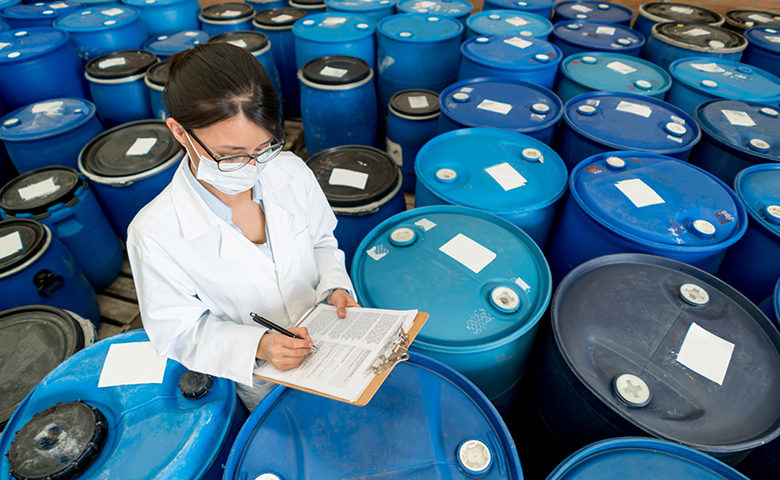Avoiding chemical spills should be a priority for every workplace. This is especially true when the risk of spillage is high or when several drops of a dangerous substance can send workers to the emergency room. In addition to the strict OSHA regulations that must be followed when handling hazardous chemicals, there are other safety precautions organizations can take to protect the well-being of their teams.
Store chemicals in appropriate containers
Hazardous materials have to be stored in containers appropriate for their volume and properties. Following the manufacturer’s instructions is vital because pouring hazardous substances into containers that happen to be available can be dangerous. After all, some materials corrode easily, increasing the likelihood of a chemical leak.
Also, depending on the materials involved, some hastily chosen containers could even react with the substances poured into them. For example, placing strong hydrogen peroxide solutions in a container with rusty surfaces can cause it to decompose explosively.
Label correctly and provide SDSs
The OSHA HazCom Standard provides specific information regarding this subject, but briefly, all containers must have labels that identify the material within and warn of its potential hazards. The only exception to this rule concerns portable containers for the immediate use of the employee who transferred the chemicals.
Each hazardous material listed in the workplace materials inventory needs its own, up-to-date, detailed safety data sheet (SDS) which, according to OSHA, should contain 16 sections. Workers need easy access to information about each chemical, including its properties, physical and health hazards, and safety precautions for handling, storage and transport. If employees know exactly what they’re working with and how to approach the substance, they will be less likely to accidentally use the wrong container and, through panic or frustration, cause a spill.
Use preventative measures and focus on spill containment
For chemicals that are housed in large metal drums, it’s a good idea to use spill containment pallets, which are designed to do what their name indicates: contain and capture spills. When introducing spill pallets into the chemical safety program, ensure that they are corrosion-resistant. Another method of containing chemical leaks and discharge include spill kits which can include highly absorbent materials that lessen the effects of a chemical spill.
Consistency in chemical storage and housekeeping
When workers are maneuvering chemicals through a cluttered area, incidents are more likely to happen. Additionally, harmful chemicals must never be left around haphazardly but should be stored in secure, designated areas. Workers should be able to trust that the same chemicals are always kept in the same place. This will not only make their jobs easier but also ensure that appropriate PPE zones always remain the same. Storage units should not be overcrowded and the chemicals stored should always be kept below eye level.
Provide appropriate PPE
The type of substances present in the workplace will influence the type of PPE required. Length and levels of exposure are also relevant. When considering the right protection, SDSs can be helpful because they note what PPE will provide adequate protection.
However, PPE is not only important to safely deal with a chemical spill but also to prevent one. Badly fitted or inappropriate PPE may cause workers to accidentally contribute to an incident (through a limited range of motion or frustration caused by inadequate equipment).
Add human factors training to your safety program
To ensure chemical safety in the workplace, employees must be aware of their own states of mind as well as the hazards. Human factors training can teach workers how states such as rushing, frustration, fatigue and complacency can affect their ability to perform their work safely.
For example, if a worker is rushing from one task to the next, they may forget to put a chemical container back in its proper spot, causing another worker to bump into it and create a spill. And a worker who has developed a skewed sense of risk may neglect their PPE when handling a chemical substance, increasing the chances of severe injury. When employees are educated about these human factors, they can begin to monitor their behavior more closely.
Handling chemical materials in the workplace mustn’t be taken lightly; supervisors and managers should implement as many preventative procedures as possible. Finding better methods of containing leaks, encouraging more careful handling and implementing stricter storing protocols for chemicals can go a long way to preventing chemical-related incidents. And working to increase employee awareness of human factors can help people working around chemicals to be more mindful of the risks when performing their tasks.

